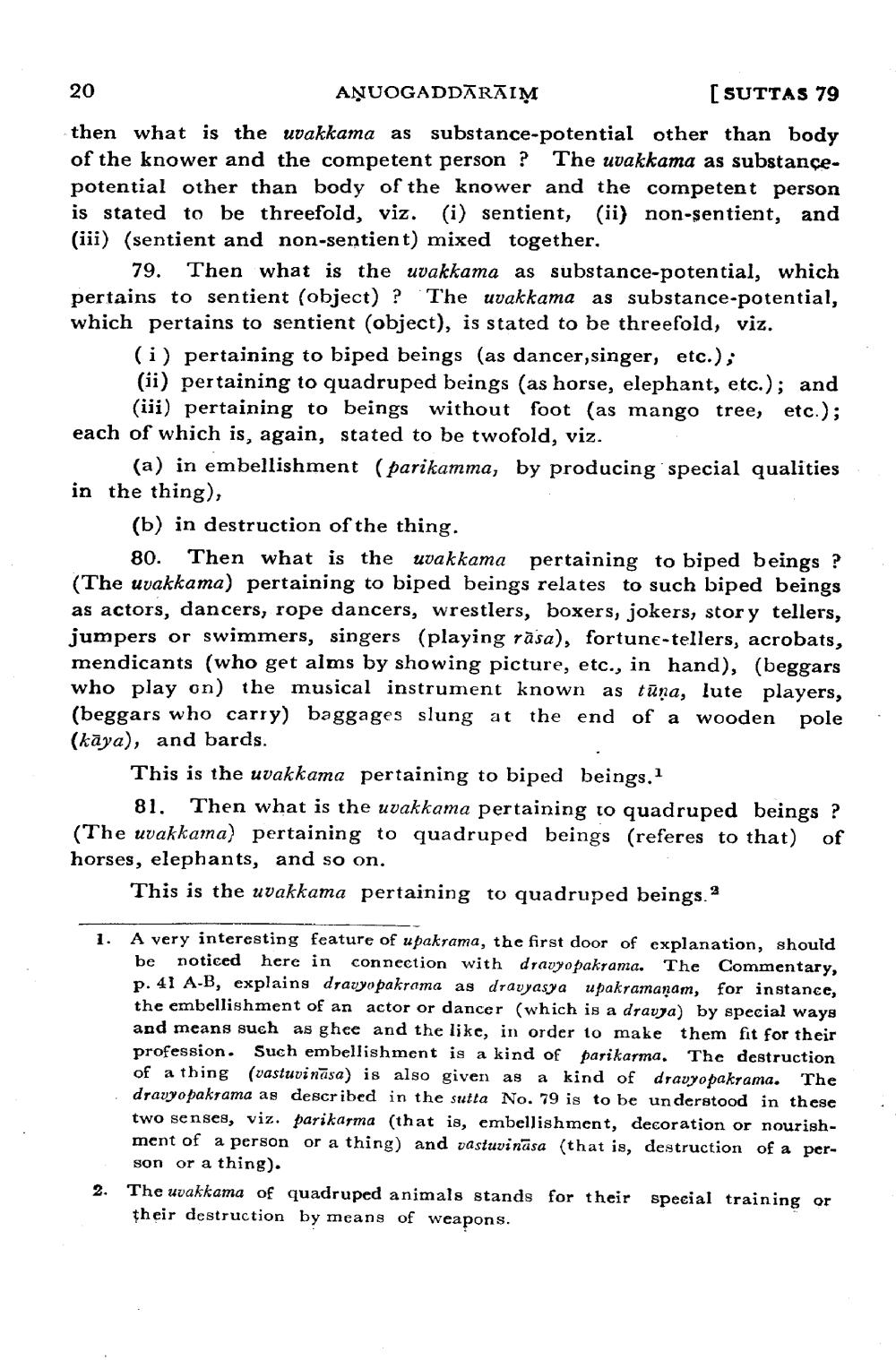________________
20
AŅUOGADDĀRĀIM
[ SUTTAS 79
then what is the uvakkama as substance-potential other than body of the knower and the competent person? The uvakkama as substancepotential other than body of the knower and the competent person is stated to be threefold, viz. (i) sentient, (ii) non-sentient, and (iii) (sentient and non-sentient) mixed together.
79. Then what is the uvakkama as substance-potential, which pertains to sentient (object) ? The uvakkama as substance-potential, which pertains to sentient (object), is stated to be threefold, viz.
(i) pertaining to biped beings (as dancer, singer, etc.); (ii) pertaining to quadruped beings (as horse, elephant, etc.); and (iii) pertaining to beings without foot (as mango tree, etc.); each of which is, again, stated to be twofold, viz.
(a) in embellishment (parikamma, by producing special qualities in the thing),
(b) in destruction of the thing.
80. Then what is the uvakkama pertaining to biped beings? (The uvakkama) pertaining to biped beings relates to such biped beings as actors, dancers, rope dancers, wrestlers, boxers, jokers, story tellers, jumpers or swimmers, singers (playing rasa), fortune-tellers, acrobats, mendicants (who get alms by showing picture, etc., in hand), (beggars who play on) the musical instrument known as tuna, lute players, (beggars who carry) baggages slung at the end of a wooden pole (kaya), and bards.
This is the uvakkama pertaining to biped beings.1
81.
Then what is the uvakkama pertaining to quadruped beings? (The uvakkama) pertaining to quadruped beings (referes to that) horses, elephants, and so on.
of
This is the uvakkama pertaining to quadruped beings.
1.
A very interesting feature of upakrama, the first door of explanation, should be noticed here in connection with dravyopakrama. The Commentary, p. 41 A-B, explains dravyopakrama as dravyasya upakramanam, for instance, the embellishment of an actor or dancer (which is a dravya) by special ways and means such as ghee and the like, in order to make them fit for their profession. Such embellishment is a kind of parikarma. The destruction of a thing (vastuvināsa) is also given as a kind of dravyopakrama. The dravyopakrama as described in the sutta No. 79 is to be understood in these two senses, viz. parikarma (that is, embellishment, decoration or nourishment of a person or a thing) and vastuvināsa (that is, destruction of a person or a thing).
2.
The uvakkama of quadruped animals stands for their special training or their destruction by means of weapons.




